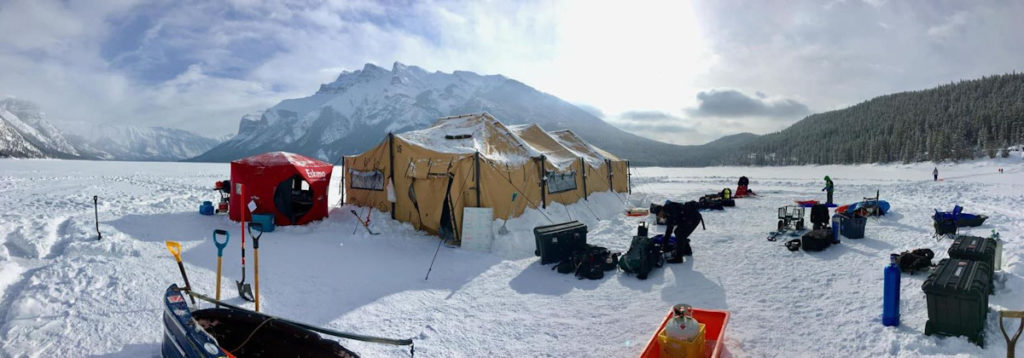On February 18-20, 2022, Alan Keller and Ocean Pro Divers from Surrey, British Columbia explored the 1912 dam under the ice in Lake Minnewanka in Banff National Park.
Ice diving is a type of penetration diving that takes place beneath ice. Diving under ice necessitates special procedures and equipment because it places the diver in an overhead environment with only a single entry/exit point. Ice diving is done for fun, scientific research, public safety (typically search and rescue/recovery), and other professional or commercial reasons.
Because each diver’s lifeline necessitates the use of a line tender, ice diving is a team sport. This person is in charge of paying out and taking in line so that the diver does not become tangled, as well as communicating with the diver via rope signal. Professional teams will also need a backup diver and a diving supervisor.
Ice diving hazards include the specific diving environmental hazards of penetration diving, particularly the risk of not finding the exit area, as well as some hazards that are more specific to cold temperatures.
- Frostbite
- Hypothermia
- Non-freezing cold injury
- Regulator freezing
- Entrapment by moving ice
- Slipping on ice: diving gear is heavy outside of the water, and the water on the diver’s exposure suit can quickly freeze, reducing mobility and traction

Dive Report
Maximum dive depth 21m, visibility about 10m (32 feet), water temp 1°C, camera underwater was GoPro 9, camera above water was GoPro 9 and Insta360 ONEX2
Alan Keller






